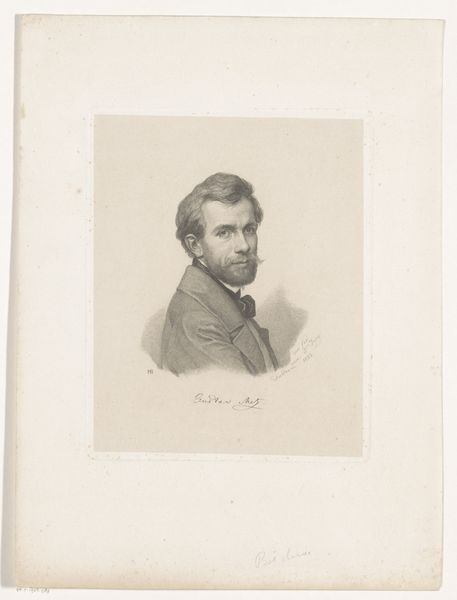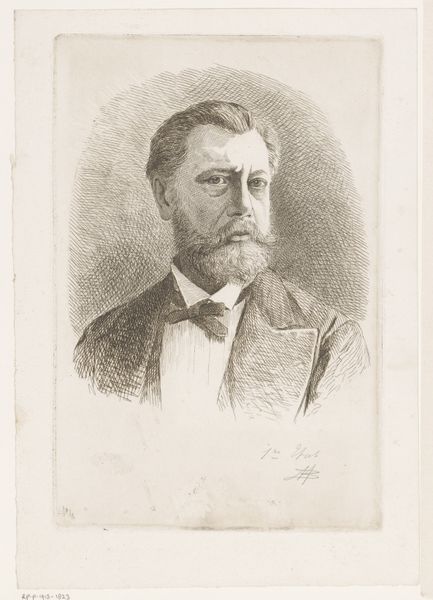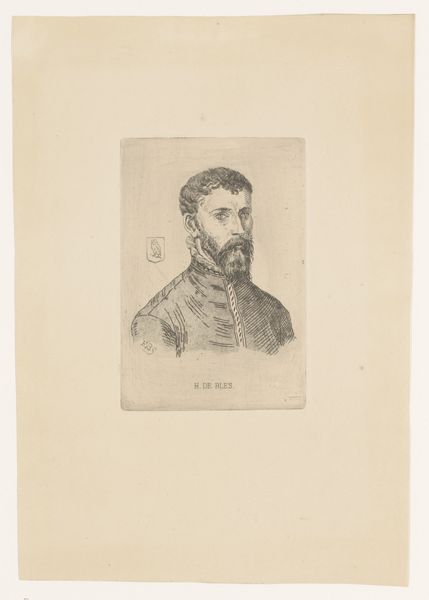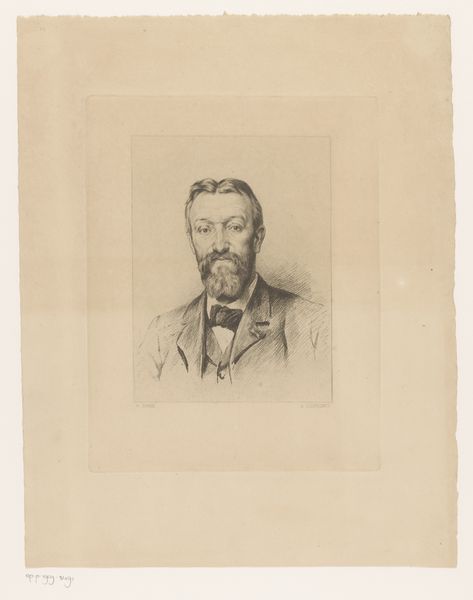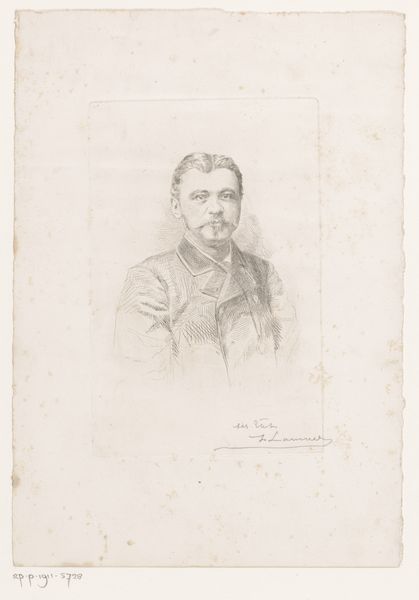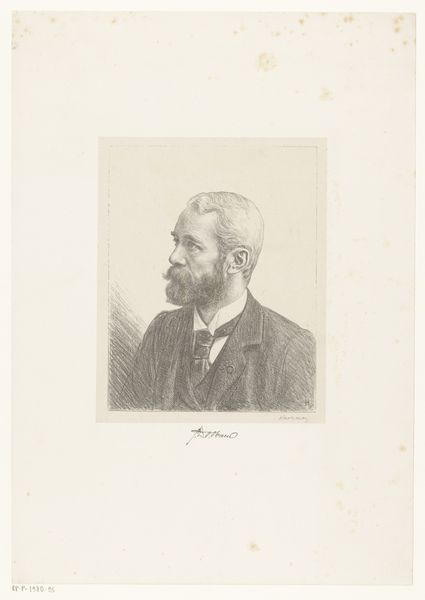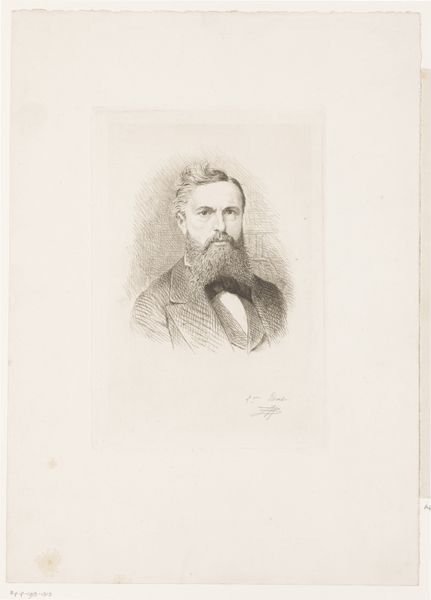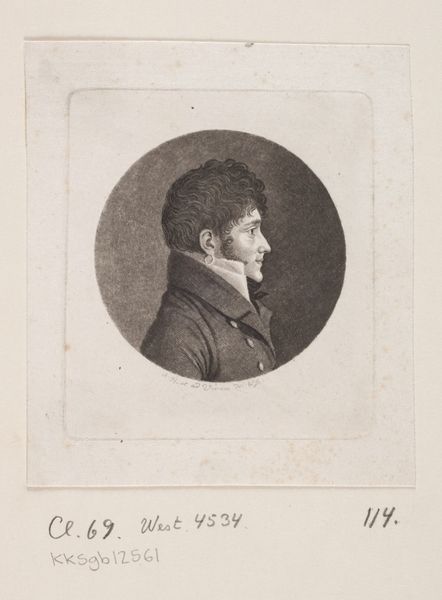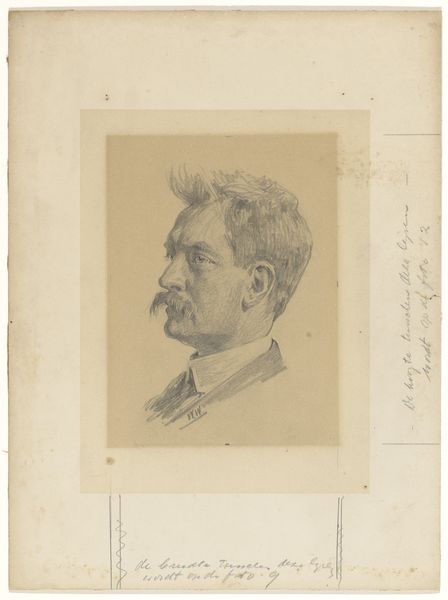
drawing, print, engraving
#
portrait
#
drawing
# print
#
romanticism
#
portrait drawing
#
engraving
Dimensions: 158 mm (height) x 78 mm (width) (bladmaal)
This print of A. P. Bernstorff og J. H. E. Bernstorff was created by J.V. Gertner in 1866, using etching. Consider the material of paper and the process of etching. The fine lines were achieved by drawing into a prepared ground on a metal plate, which was then exposed to acid. This precisely controlled process allowed for detailed and repeatable images, essential in an era of expanding print culture. The sharpness and reproducibility of the etched line lends itself to portraiture, capturing likeness and idealizing it. But it’s also work. The etcher translates the world into a system of labor. Look closely, and you’ll see that the image is built from thousands of tiny actions: short strokes, cross-hatching, and careful shading. In appreciating this print, we can move beyond subject matter and aesthetics. Instead, we can value the skilled labor and reproductive potential that etching offered in the 19th century, blurring the lines between art, craft, and industry.
Comments
No comments
Be the first to comment and join the conversation on the ultimate creative platform.
